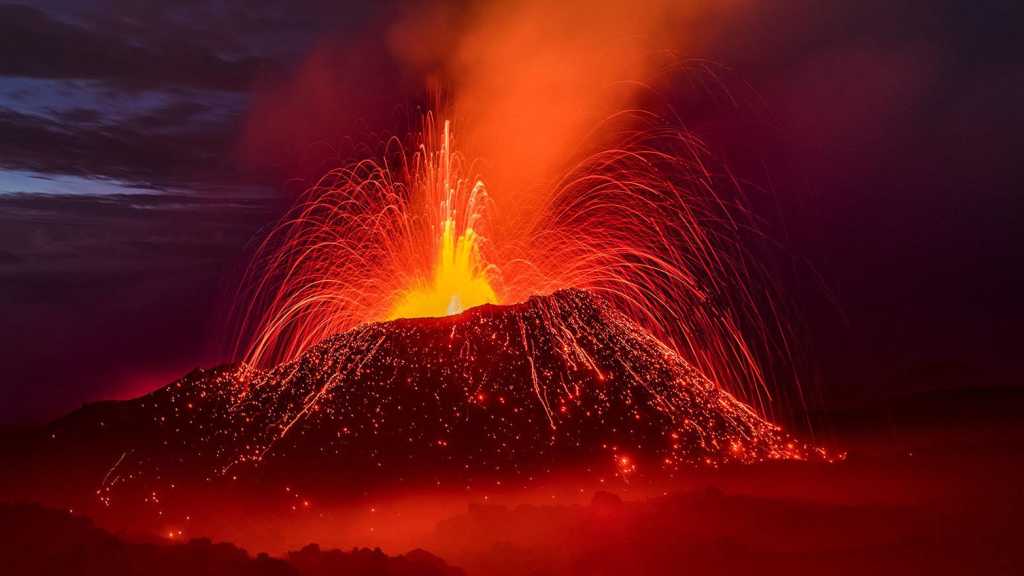At 3,071m high, the Piton des Neiges is considered to be the highest point in the Indian Ocean. The volcano, extinguished for a long time, fascinates by its majestic presence in the center of the island. The Piton des Neiges is a very beautiful hiking destination. The perfect opportunity to explore a wonderful unspoilt nature. Its name is misleading, because this roof of Reunion is rarely covered with a white coat: there is no eternal snow and snowfall is infrequent. Nevertheless, it is cold and hikers who want to undertake his climb must be well equipped.
The Maïdo peak is one of the most spectacular views of the Cirque de Mafate. This natural site, accessible by car, is a balcony on Reunion Island. It offers a remarkable panorama of Mafate and the west coast of the island, hemmed in by magnificent beaches. The Piton Maïdo is therefore essential to embrace the beauty of Reunion in one look.
The Piton de la Fournaise culminates in the south-east of the island at 2,632 meters; it is one of the most active volcanoes on the planet. It is also one of the most visited tourist sites on the island of Reunion. The bravest can go admire the sunrise over the crater after a few hours of hiking (night). The others will be happy with the Pas de Bellecombe and that's already a lot! Or even to go down in the enclosure to approach the Formica Léo ... The lucky ones will be able to admire the flows of lava in case of volcanic eruption .
The "Pitons, Cirques and ramparts" of Reunion Island have been listed as World Heritage by UNESCO among the most prestigious sites in the world. This label is also a guarantee of protection of animal, plant and mineral heritage that extends over more than 100,000 ha in the center of the National Park of Reunion, or 42% of the island.
It covers enchanting sites with names that make you dream: the two volcanic mountains of Piton de la Fournaise and its lunar plain (still among the most active in the world) and that of Piton des Neiges (the roof of the Indian Ocean); the circus of Mafate and the ramparts that delimit the interior space of the island, where stands the summit of Nez de Bœuf; the Piton d'Anchaing in the circus of Salazie; the Piton de Sucre and the Chapel in the circus of Cilaos; the Grande Chaloupe in the north of the island and, in the south, Mare Longue with its magnificent primary forest.
Reunion, she has everything of a big!
In the Indian Ocean, between the vast Madagascar and Mauritius, the volcanic island of Reunion emerged from the bottom of the ocean, there are three million years. This piece of France 10,000 km from the "Métrople" is heated in the sun of the southern hemisphere can not be compared to the other islands of the Indian ocean: villages lost between narrow ridges, lunar landscapes or dizzying waterfalls, Reunion will delight as much the followers of the idleness as the sportsmen and in particular the hikers. In this breathtaking natural space, we also discover an original culture at the crossroads of three continents: Asia, Europe and Africa.
When to go?
Reunion is characterized by a humid tropical climate tempered by the oceanic influence of the trade winds blowing from east to west. The climate of Réunion is characterized by its great variability, particularly due to the imposing relief of the island, which is at the origin of numerous microclimates.
2 issues must be considered:
- Rains: on the west coast, it rarely rains, while in the east, it rains very often!
- Cyclonic period usually from December to March. Anyway, January is not recommended: it is the school holidays period.
So…
- “Cooler” and dry season is from May to November
- The rest of the year is summer which means rainy and hot season. Might be difficult for hiking.
- Divers and surfers are more lucky as sea temperature is nice and warm whole year long…
Formalities
- For French or European Union citizens: a valid identity card or passport.
- For nationals of foreign countries outside the European Union: a valid passport, a visa where applicable (e.g. South Africa) and a return ticket or a continuation of travel.
Precautions should be taken, as well as for departures to all tropical destinations:
- Use of anti-mosquito cream or spray.
- For passengers from endemic countries: vaccination against yellow fever and cholera.
- There is no malaria in Reunion.
Currency
Being a French department, the Currency is obviously the Euro. You will not need to change your money when you arrive, but if you have to, you can change your currency at the airport, in the city or in the big banks. Some hotels of the island accept foreign currencies.
Most of credit cards are usable in Reunion, you can withdraw money at the ATM’s, which are also called “gabiers”, and are quite numerous in the city centres.
Attention, for the metropolis cheques, certain stores, hotels or even certain service stations do not accept them anymore. This is usually indicated, but do inquire before.
